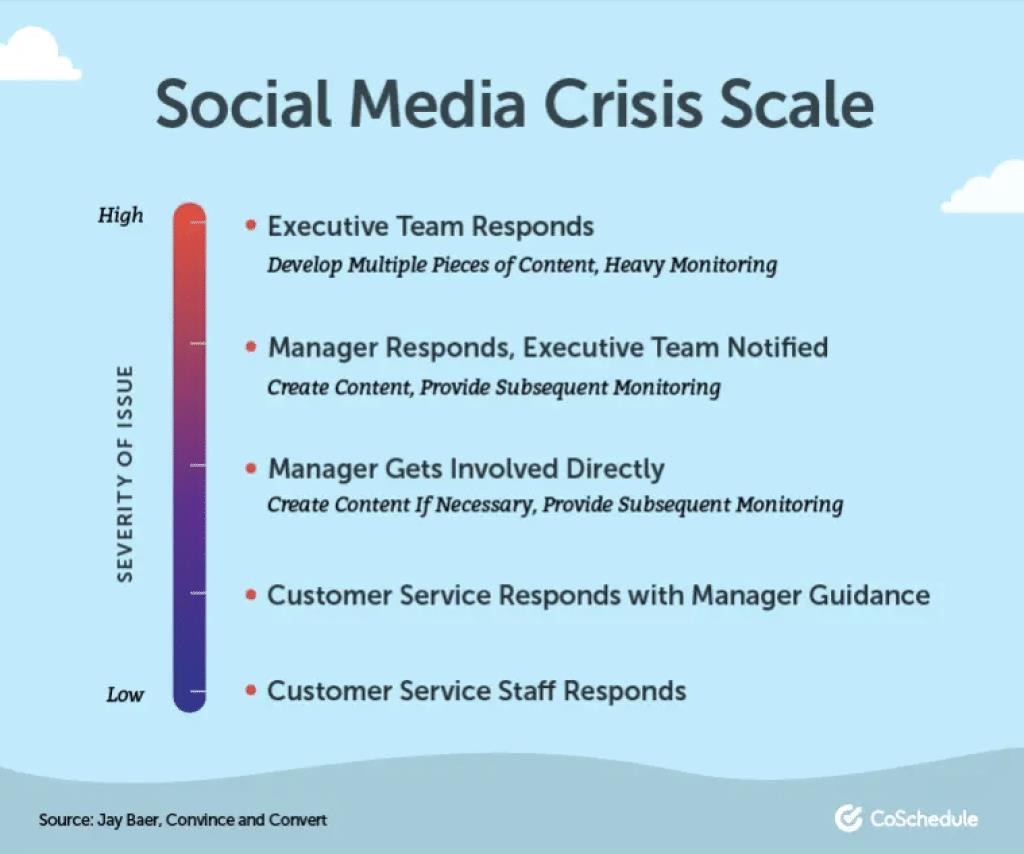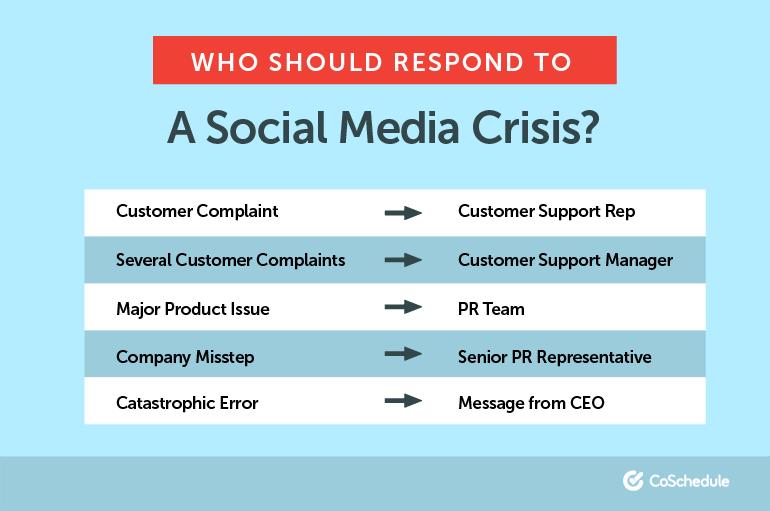You’ve probably seen it before. One post goes sideways, and suddenly a brand’s comment section turns into a wildfire (LinkedIn, anyone?). In seconds, a poorly worded post, an insensitive image, or a delayed response can spiral into something much bigger. If you’re managing a business account, that kind of heat isn’t just uncomfortable. It’s expensive.
Social media crisis management isn’t about avoiding mistakes altogether. It’s about knowing what to do when they hit.
Here’s what you need to know to stay prepared, keep your team calm, and protect your brand.
Quick Takeaways
- Respond fast—but don’t rush.
- Keep one voice across platforms.
- Acknowledge issues without legal overpromising.
- Monitor social mentions constantly.
- Always have a backup plan.
What Counts as a Social Media Crisis?
It’s not just about trolls or negative comments. A social media crisis means something has gone wrong that draws intense public attention. Maybe your account was hacked. Maybe someone on your team posted the wrong content—or worse, something offensive. Maybe an external issue pulls your brand into a conversation you weren’t ready for.
Not every angry comment is a crisis. But if the situation gains traction, media outlets pick it up, or your audience starts organizing boycotts, it’s time to act.

Image source
Why Speed Matters More Than Perfection
People expect quick answers online. If there’s silence from your brand, it doesn’t look like you’re thinking—it looks like you don’t care. You don’t need the perfect statement right away, but you do need to acknowledge what’s happening.
Even a simple post saying, “We’re aware of the situation and reviewing internally” can buy time and build trust.
The longer you wait, the harder it becomes to steer the narrative.
Have a Plan Before You Need It
Most teams don’t think about crisis response until they’re in the middle of one. That’s a mistake. Planning ahead gives you the structure to move fast when every second counts.
Your social media crisis plan should include:
- Who needs to be looped in immediately
- Who approves the first response
- A list of likely scenarios
- Template posts for different crisis types
- A chain of command for escalation
Don’t wait for chaos to figure out who’s calling the shots.
Video source
Keep a Single Voice Across Platforms
Your audience doesn’t care if different people manage your Facebook, Twitter, and Instagram accounts. They expect one brand, one tone, and one story.
When your responses vary by platform, it confuses followers and invites more scrutiny. Stick to the same message, even if you adjust it slightly for format.
Consistency shows leadership. It also helps avoid misinterpretation.
Monitor Like Your Brand Depends On It
Because it does. You can’t fix what you don’t see.
Use social listening tools to track mentions, hashtags, and trending conversations. Google Alerts help, but they only scratch the surface. Invest in software that flags sentiment shifts and spikes in activity.
During a crisis, set alerts to notify you of rapid engagement. That could be your first clue that something’s blowing up.
Why Your Crisis Plan Needs an Internal Communication Strategy
Public messaging matters, but internal communication is just as important during a social media crisis. If your team isn’t on the same page, even the best crisis plan can fall apart fast.
Think about it. If your marketing manager is telling your followers one thing, while your sales team says another, you’re fueling the chaos instead of calming it. Employees become accidental spokespeople every time they post online or talk to customers. That’s why everyone inside the organization needs clear, immediate guidance on what to say (and what not to).
Keep Your Team Updated
Use internal channels like Slack, Teams, or even a good old-fashioned email to share a unified message. Give your staff a short script or FAQ so they’re not guessing. Designate a point person who can answer internal questions fast without bottlenecks.
You don’t need to lock every employee down, but they should understand what’s going on and how to handle questions if they come up. A little alignment goes a long way in stopping misinformation before it spreads.
So while you’re focused on public-facing posts, don’t forget the folks on the inside. They’re part of the story, too, and they can help keep it from spiraling.

Image source
What to Say (And What to Avoid)
You’re not writing for a courtroom. You’re writing for people who are confused, frustrated, or angry. Speak plainly. Own your mistakes. And never throw employees or customers under the bus to protect your image.
What works:
- “We hear you. We’re addressing it.”
- “We made a mistake. Here’s what we’re doing about it.”
- “We’re reviewing our process to prevent this.”
What doesn’t:
- Blaming a rogue intern
- Hiding or deleting comments
- Corporate jargon that says nothing
If you need legal approval, work with counsel in advance to craft general templates that feel human. You don’t want your apology to sound like a privacy policy.
Train Your Team Like It’s Fire Safety
You probably wouldn’t send someone into a kitchen fire without showing them the extinguisher first. Social media works the same way. Everyone with posting access should know what to do if something catches fire.
Run crisis drills. Use role-play scenarios. Give your team space to practice under pressure, before pressure hits. Confidence builds from repetition, not guessing.
When to Go Silent (Yes, Sometimes You Should)
Not every crisis deserves a public response.
If something serious is under investigation, it’s smarter to go dark while facts are being confirmed. Posting half-truths or guesses just fuels confusion. In those moments, less is more. Just be clear that you’re working on it. Silence without context is read as negligence.
Use Humor With Caution
Humor works for some brands—until it doesn’t. During tense situations, jokes can come across as tone-deaf or dismissive. If your brand is known for wit, you might be tempted to lighten the mood. But misreading the room will cost more than a few likes.
Unless you’re 100% sure it helps, skip the joke.
Learn From Every Crisis
Once the dust settles, it’s tempting to move on quickly. Don’t.
Hold a debrief. What worked? What didn’t? Where did confusion slow you down? How did your audience respond? Update your crisis playbook. Keep examples of past posts—both good and bad. Over time, those lessons will help you make faster, smarter decisions.
Final Verdict
You won’t always see a crisis coming. That’s what makes it a crisis. But you can decide how prepared you want to be when it hits.
Social media isn’t just where crises happen. It’s also where reputations are rebuilt. If you stay ready, you won’t need to scramble. And your audience? They’ll notice when you show up with clarity, empathy, and accountability.
Let’s be honest. You can’t avoid every mistake. But with a plan in place, you’ll be ready to fix them fast.
If you need a hand with crisis management, Marketing Insider Group offers specialized services to help you meet your needs. We’re here to make your life easier! Contact us today to learn more or book your free consultation with our team.
Read More
By: Lauren Basiura
Title: Social Media Crisis Management: What You Need to Know
Sourced From: marketinginsidergroup.com/sales-alignment/social-media-crisis-management-what-you-need-to-know/
Published Date: Mon, 21 Jul 2025 10:00:31 +0000
.png)





